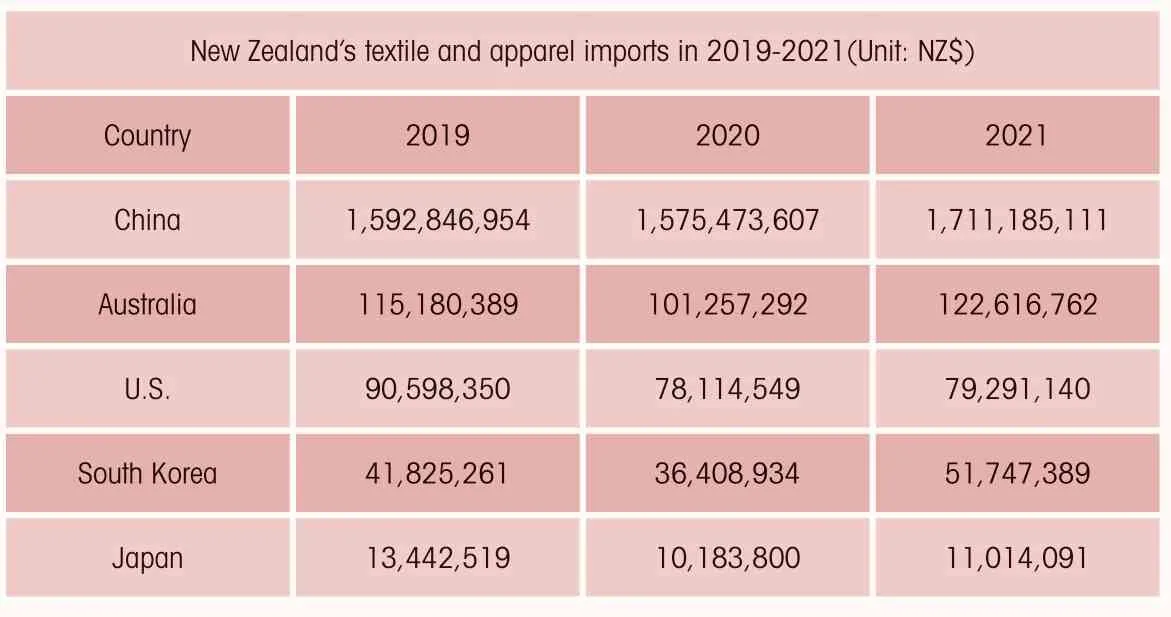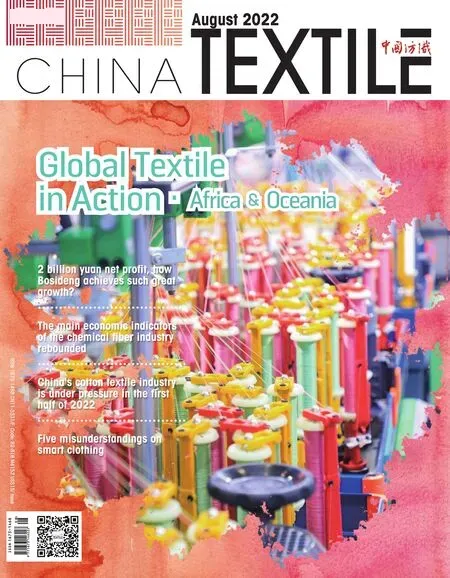China-New Zealand trade to further boost New Zealand’s economic recovery
By Zhao Xinhua
New Zealand’s textilee industry, which accounts for about 2 percent of thee country’s GDP, has grown at an annual rate of 1.2 pp ercent over the past five years. New Zealand leads the world in the production of wool and products madd e of wool, such as carpets and knitwear. New Zealann d’s rich variety of wool has driven the production of wwool yarn, and consumption upgrading has also contribb uted to the growth of mar—kkeett sshhaarree.. TThhee gglloobbaall wwooooll yarn market is anticipated to reach nearly USD 50,500 mn in terms of value by the end of the forecast period 2029, registering a CAGR of over 4 percent. East Asia will be a prominent region in the wool yarn market by 2029. In addition,New Zealand continues to explore a move into indus—trial textiles and nanotechnology materials to meet the need of the advancing textile industry.
China, Australia, the United States, South Korea and Japan are New Zealand’s top five trading part—ners. China has overtaken Australia to become New Zealand’s largest trading partner, largest export mar—ket and largest source of imports. In 2021, New Zea—land imported NZ$1.71 billion of textile and apparel from China, accounting for about three thousandths of the total value of China’s textile and apparel ex—ports. Since the Regional Comprehensive Economic Partnership (RCEP) came into force three months ago, the bilateral trade relationship between China and New Zealand has been further deepened with the promotion of RCEP. In the first quarter of this year,the year—on—year growth rate of China’s import and export to New Zealand exceeded double digits.
New Zealand’s consumer price index rose 6.9 percent in the first quarter from a year earlier, the biggest increase since the second quarter of 1990,according to Statistics New Zealand. The RBNZ notedthat disruptions to the global supply chain caused by COVID—19 and the Russia—Ukraine conflict have exacerbated global inflationary pressures, pushed up global commodity and energy prices significantly, and led to continued low consumer confidence and rising consumer price index in New Zealand. A Survey of 1,600 consumers by Westpac NZ found spending on clothing/footwear was down 34 percent.

Source: NZ Stat.
To mitigate the economic impact of the pan—demic, the New Zealand government moved quickly to adjust, launching a business assistance program in 2020. The plan will invest NZ$12.1 billion to support the struggling economy. Nearly half of that money went to wage subsidies for companies affected by the pandemic.
A protocol on upgrading the free trade agree—ment between China and New Zealand took effect on April 7 this year, further facilitating bilateral trade and investment, China’s Ministry of Commerce said.


